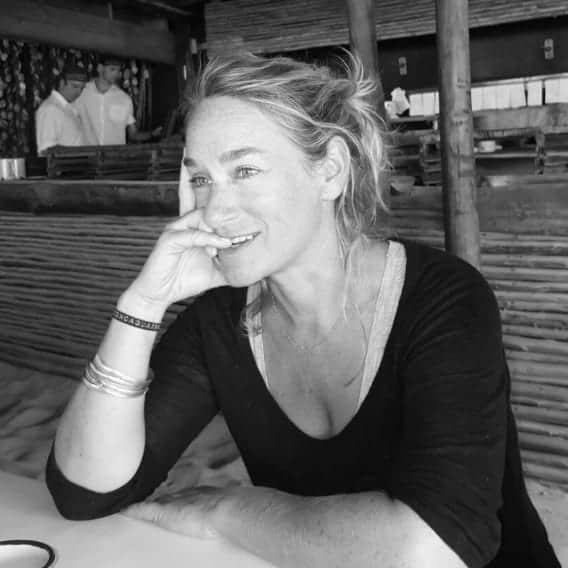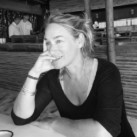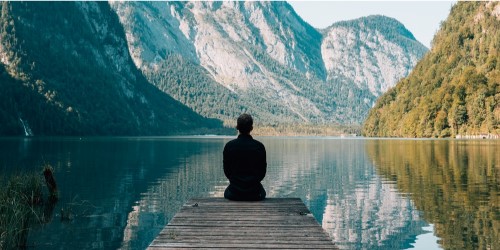
Caverly Morgan is a spiritual teacher, author, and nonprofit founder known for integrating the timeless wisdom of Zen with a modern, relational approach to nonduality. With over two decades of teaching experience and eight years of silent monastic training, she is the visionary behind Peace in Schools and Realizing Freedom Together—organizations devoted to mindfulness education and collective liberation. Through her writing, speaking, and contemplative leadership, Caverly inspires personal transformation and a deeper recognition of our shared being. MysticMag offers an exclusive interview.
Caverly, how has your experience of eight years in a silent Zen monastery influenced your approach to integrating contemplative practices into modern educational settings?
First, I must acknowledge that when I initially entered the monastery, I didn’t realize I was committing to eight years. I had envisioned it as just a six-month practice. However, after those six months, I came to a profound realization: I had barely scratched the surface of what was possible through this training. This epiphany dramatically altered my perspective, and I found myself recommitting year after year.
Now, to address your question about how my eight years in the monastery influenced my approach to integrating contemplative practices into modern educational settings. Reflecting on it, I realize that the contemplative tools I was introduced to in the monastic setting had a profound impact on me. When I left, I was overwhelmed by the realization that had I had access to such transformative tools during my high school years, I would not have suffered in the way I did. One specific example of a contemplative technology that I learned during my time there was the practice of recognizing that I am not my thoughts.
In my younger years, I didn’t have a mentor to guide me in this understanding. As a result, I believed that everything I thought was true, and my reality was shaped by these conditioned thoughts—often negative ones about myself. This conditioning came from society, family, friends, and culture. The practice of recognizing negative self-talk and learning to shift my relationship with the thinking mind—this conditioned mind—was life-changing.
This tool, among others, is something I’ve adapted to make it accessible for educational settings. It’s a practice that I wish I had been introduced to much earlier in life, and I now feel passionate about making it available to others, particularly students who might be struggling in the ways I once did.
As for the environment within the monastery, it was a fully silent backdrop, but not without meaningful communication. There were times of group discussions about our practices, often facilitated by one of the monks or a teacher. Additionally, we had private discussions with teachers. What made this form of communication unique was its deep focus on practice. It was never about superficial matters or casual updates on the latest trends, but always about the practice itself, and how we were integrating it into our lives.
In your book, you discuss the intersection of personal transformation and collective awakening. How do you see individual mindfulness practices contributing to broader societal change?
Just as we each have a personal ego, there is also a collective ego—though we rarely bring attention to it. When I speak of the personal ego, I am referring to the activity of the conditioned mind, which leads us to perceive ourselves as separate, as other than. This same activity of mind manifests in groupthink, where an entire group adopts a sense of separation.
If we are to address how practices can help dismantle the illusion of separation on an individual level, if we value collective liberation, we must also look at how we can approach it collectively. If you observe the world today, you’ll notice that the collective ego—the illusion that groups or collectives are separate from one another—is more pronounced than it has ever been…in my lifetime anyway! In many ways, this makes it a particularly valuable time to question how these narratives of “othering” are maintained. How can practices help us begin to see through these narratives and recognize their illusory nature?
During my monastic training, we focused almost exclusively on what we perceive as the personal ego—examining how we are conditioned to behave, our thought patterns, and the ways we try to survive our lives. For example, I might be conditioned to be a perfectionist, believing that if I get everything just right, I will be loved. But there are also collective survival strategies. For instance, a collective strategy might be the belief that “we must win at all costs”—something that plays out in the world today. Or perhaps it’s the notion that “we deserve, but they don’t.” Imagine if we, as a collective, could see through these distortions.
I believe that if we could recognize and dismantle these distortions, we could create a society that feels radically different from the one we currently live in. It comes down to creating opportunities to examine how we are with one another, rather than habitually striving for power over others. The idea of “power over” arises from the distorted belief that we are separate from one another. In personal relationships, this might manifest as the belief that I can have power over you. On a collective level, we see this play out through hoarding resources, and other forms of domination and inequality.
The problem is that we have lost sight of what true power is. We tend to think of power as “power over,” but real power is not domination—true power is Love.
You’ve pioneered the first for-credit mindfulness class in public high schools. What challenges did you face in implementing this program, and how did you address them?
I was fortunate to begin this program with a sense of naivety, which, in hindsight, worked to my advantage. I truly didn’t realize that what I was trying to create hadn’t been done before. I was leading an after-school program when the principal came to observe what I was doing with the teens. He explained that, tragically, there had been a suicide at the high school the year before, and he was under increasing pressure from parents to address the well-being of students.
As a principal, he was struggling with how to approach this issue and saw that there wasn’t enough attention being paid to how we were tending to the mental well-being of our young people in the environment where they spend so much of their daily lives—schools.
The principal saw what I was offering as something new and unique, something that hadn’t been done before. He said, “We need to reach more of our young people with your program.” I told him the only way to reach more teens, which was only being offered as an after-school program, was to integrate it into the school day as an official course. These tools for mental wellness couldn’t just be an extra add-on; they had to be embedded into the curriculum.
He suggested that I try a forecasting process, a concept that might not be familiar outside of the United States. Essentially, forecasting is when you demonstrate a class to see how many students are interested in signing up. He expected about 20 to 25 students, and based on that, he’d figure out how to fit the class into the school schedule.
I did two days of demonstrations, giving teens an experience of what the course would be like. During these sample classes, I dropped the phrase, “You are not your thoughts,” which really seemed to resonate with the teens. To my surprise, over 300 students expressed interest in the course. Suddenly, the principal found himself in a position where he had to figure out what to do next. Thankfully, he was a bit of a maverick and wasn’t deterred by the experimental nature of the project. In fact, he, like me, saw it as a challenge worth embracing.
We worked together to establish the class as an elective credit, and I was fortunate to have a wonderful co-teacher who was instrumental in helping get the course up and running. She had the teacher certification that I lacked, which allowed us to team up and make the course official. And that’s how the journey began. Ten years later, Peace in Schools has served over 6,000 teens and continues to expand.
Your retreats emphasize nondual awareness and connection with nature. How do these elements facilitate a deeper understanding of self and community among participants?
At the deepest level, what my retreats offer is a gentle invitation for participants to inquire into the true nature of who we are. This inquiry is so crucial because our suffering arises from a deep confusion about our true selves. If I believe that I am an isolated, separate being, then suffering becomes inevitable. However, when I come to understand who I truly am, I can connect with the realization that the essence of who I am is not that which suffers.
My retreats open many doors for this inquiry and exploration of direct experience, guiding participants toward discovering their true selves. One of the most powerful ways this unfolds is through immersion in beautiful natural settings. Time spent outdoors not only reconnects us to nature, but also reminds us that we are nature. The experience of being in harmony with the more-than-human world supports the realization of our true nature.
While I don’t think it’s impossible to have a transformative spiritual retreat in an urban environment, I find myself drawn to settings where everything aligns to nurture this remembrance of who we really are. Just this morning, as I was preparing for our conversation, Sarah, I had the privilege of watching two wrens that had just discovered a new birdhouse right outside my bedroom door. I observed them choosing which twigs would create their new home, a magical process to witness. This experience had nothing to do with something we’re all familiar with: internal struggles of questioning whether I am enough, whether I’ve done enough, or feeling overwhelmed by the state of the world. Instead, it was a quiet reminder of the simplicity and beauty of being in tune with what is real. I am blessed to have the opportunity, every day, to support people in remembering what is real.
As someone who blends traditional Zen with modern, relational approaches, how do you navigate maintaining the essence of ancient practices while making them accessible to contemporary audiences?
One of the greatest gifts my eight years of training at the Zen Monastery gave me was a deep appreciation for direct experience. This, to me, is one of the most valuable aspects of my practice. I wasn’t encouraged to memorize sutras—though there is certainly nothing wrong with that—but rather to find presence in every moment, in every circumstance, at all times. To me, this is the heart of Zen: being present with what is.
What I love about exploring the heart of all great spiritual traditions is that, at their core, they are the same. The essence of these traditions is about recognizing the truth of who we truly are—something I explore in my last book, The Heart of Who We Are: Realizing Freedom Together. Despite the many different forms these traditions take, the core message is consistent: it’s an invitation to recognize and connect with our true selves. In my experience, it’s simply a matter of then applying skillful means—asking, “In this context, with this particular body and mind, how can the journey to discovering who we truly are be most accessible?”
This approach varies based on the room I’m in. For example, I speak about the heart of who we are differently to a room full of teenagers than I do to a room full of people who have been practicing insight meditation for 20 years, or exploring teachings from nondual teachers like Sri Ramana Maharshi or Nisargadatta. The message remains the same, but how I convey it depends on the audience.
What I find especially compelling about the nondual teachings is that the question of “Who am I really?” is fundamentally primary and accessible in any situation. This question transcends religious traditions; it’s a profound curiosity about the nature of our own being and the nature of reality itself.
I think the reason my approach works in diverse settings is because I wasn’t trained in a tradition where there was a lot of religious packaging. I didn’t have much to “undo” to get to the essence. For instance, when someone once asked me if what we’re doing in high schools is “stealth Buddhism,” I immediately replied, “Absolutely not.” We are not teaching Buddhism per se; we are inviting inquiry. Many Buddhist practices support such inquiry, but we get to the heart of those practices in a way that makes them relevant for everyone—whether a Christian, a Muslim, or an atheist.
For example, the practice of directing attention and placing it where you want, without judgment, is not inherently Buddhist. It’s a universal practice that can enrich anyone’s experience.
How do you reconcile the paradox of striving for inner transformation while also embracing the present moment as already whole and complete?
One of the things I often say is that the reason self-improvement doesn’t truly work is because there is, in fact, no separate self to improve. In my own spiritual practice, I spent years striving to become a better person, and that striving even bled into my spiritual work, where I was striving to be a better spiritual practitioner. However, in the early days of my practice, I didn’t realize how much that striving was actually maintaining the very thing I longed to transcend—the illusion of a separate self.
When we recognize that we are already whole and complete, the desire for change comes from a very different place. It no longer arises from a sense of lacking or needing to be fixed. For example, I desire for high schools to be more peaceful environments where young people can grow, develop, and learn. This desire doesn’t come from a place of frustration or seeing something broken, but rather from a place of fullness and the recognition that we are inherently connected. We are, in essence, what we long for—peace. Our true nature is peace. Yet, we engage in so much conditioned mental activity that we forget this fundamental peace of our being, and most of us walk through our days unaware of this inherent stillness, this inherent wholeness.
Now, as for the children’s book I wrote, one of the reasons I felt compelled to write it was to invite young people to explore questions like: Who am I really? Am I my hairstyle? Am I defined by how tall I am, or by where I live and who I live with? Or is there something deeper within me? These are the kinds of questions no one asked me when I was young, but I believe they are incredibly important in today’s world. Our primary confusion arises from misunderstanding the true nature of our being, and most of us spend very little time questioning What is the nature of my being?
In my book The Heart of Who We Are, I describe how, on the relative plane of reality—the reality in which we do our shopping, maintain our identities, and navigate through life—we focus so much of our attention outward. We rarely pause to ask: What is it that is focusing? Where is this attention coming from? Who am I, prior to the activity of the conditioned mind? This question can seem esoteric to some, but I think it’s important to consider. We may have inherited conditioning even before birth. Studies in epigenetics show that we aren’t born as blank slates. From a Buddhist perspective—and in many other spiritual traditions—this conditioning extends beyond just this current life. It’s a kind of imprinting that comes from previous lifetimes. I believe this conditioning shapes us over time, forming patterns that go beyond this body and mind, influencing who we are in this moment.
This exploration into who we truly are is what allows us to begin to disentangle ourselves from the conditioned responses and thoughts that so often limit us. It’s through this deep questioning that we can recognize we are already whole, already peaceful, and already complete.
If you would like to find out more about Caverly Morgan, please visit https://www.caverlymorgan.org/ She offers online classes, workshops, and meditation gatherings. She also leads regular meditation retreats. If you’d like to learn more about Realizing Freedom Together, please visit: https://www.realizingfreedomtogether.org/



